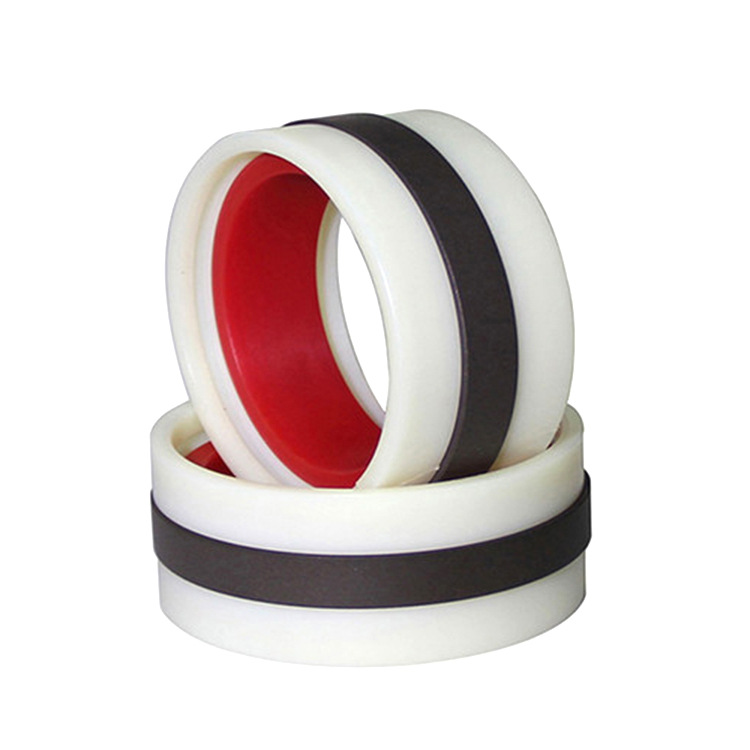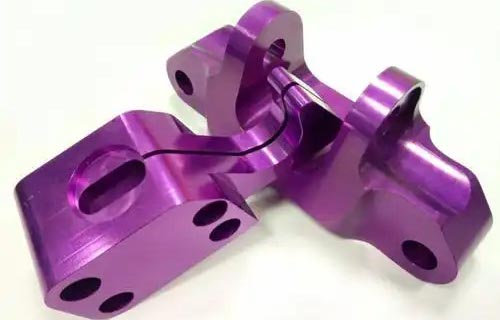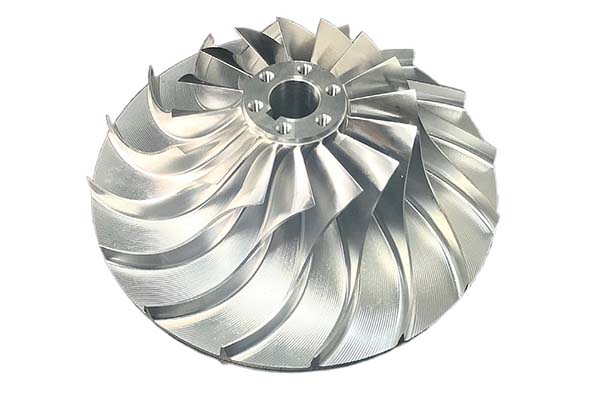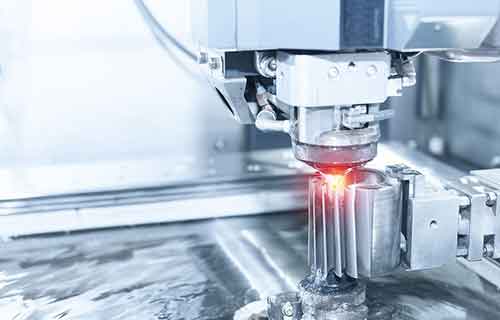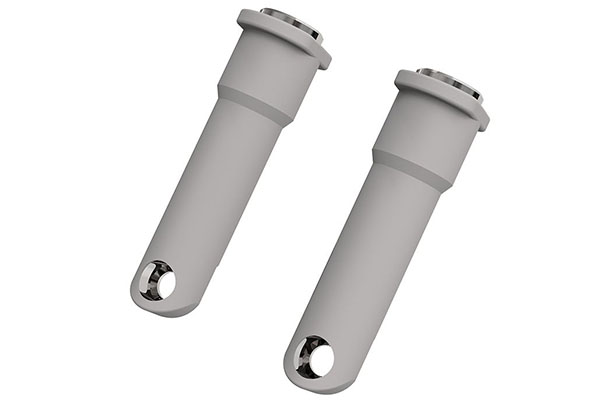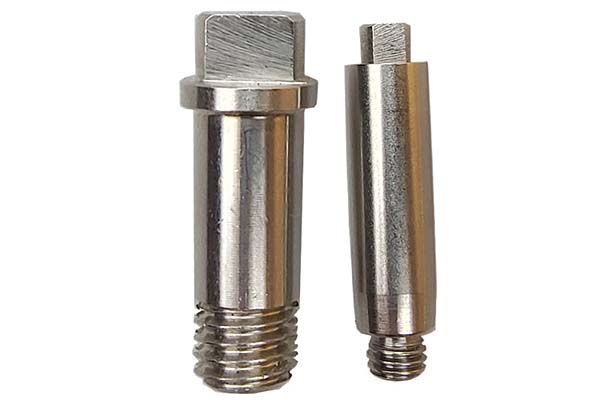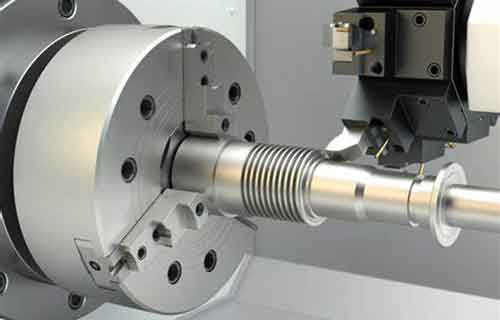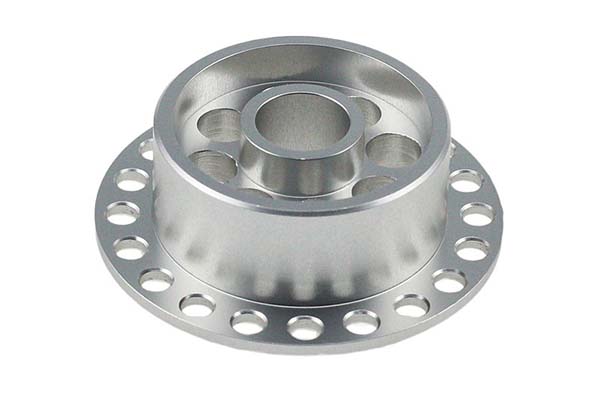The Definition and Characteristics of Precision Parts
Definition
Precision parts, as defined by the international standard ISO 2768 (for geometric tolerances) and various industry - specific standards, are components manufactured to extremely tight tolerances. These parts are designed to meet exacting specifications in terms of dimensions, surface finish, and material properties. For Yigu Technology example, in the aerospace industry, precision parts such as turbine blades in jet engines must be manufactured with a tolerance of ±0.001 inches or even less in some cases. This high - level of accuracy ensures the proper functioning of the overall system.
Key Characteristics
- High Precision: Precision parts are characterized by their extremely accurate dimensions. For instance, in the production of medical implants like hip replacements, the ball - and - socket components need to be machined with a precision of up to 0.0001 mm. A small deviation in the diameter of the ball or the socket could lead to premature wear, pain for the patient, and potential failure of the implant. High - precision manufacturing techniques such as diamond turning, which can achieve surface roughness values as low as 0.001 µm, are often employed.
- High - Quality Materials: These parts are typically made from high - grade materials. In the automotive industry, engine components like crankshafts are often made from high - strength alloy steels. These steels have excellent fatigue resistance and high tensile strength, which are crucial for withstanding the high - stress environment within an engine. In the electronics industry, printed circuit boards (PCBs) use high - quality fiberglass - epoxy materials to ensure good electrical insulation and dimensional stability.
- Complex Design: Precision parts often feature complex geometries. Take, for Yigu Technology example, the impellers in a centrifugal pump. These impellers have curved vanes with specific angles and radii. The complex design is engineered to optimize fluid flow, increase pump efficiency, and reduce energy consumption. Another example is the micro - electromechanical systems (MEMS) devices, which can have intricate 3D structures with moving parts on a microscopic scale, such as the tiny accelerometers used in smartphones for motion sensing.
- Strict Tolerances: Tolerances in precision parts are much tighter compared to standard components. In the semiconductor industry, when manufacturing integrated circuits, the line widths of the components on the silicon wafers are now in the nanometer range. For example, in 7 - nanometer process technology, the tolerance for the width of a transistor gate is extremely tight. A deviation from the specified tolerance can lead to changes in the electrical characteristics of the transistor, affecting the performance and functionality of the entire integrated circuit.
The Crucial Role in Advanced Manufacturing
Aerospace Industry
In the aerospace industry, precision parts are the linchpin of safety and performance. Take the components of an aircraft engine, such as turbine blades, for Yigu Technology example. These blades are subjected to extreme temperatures, reaching up to 1,500°C in some modern jet engines, and high rotational speeds, often exceeding 10,000 revolutions per minute. To withstand such harsh conditions, they are made from superalloys like nickel - based alloys, which have excellent high - temperature strength and creep resistance.
The precision of these blades is also of utmost importance. A small deviation in the shape or dimensions of a turbine blade can lead to unbalanced rotation, increased vibration, and reduced engine efficiency. In fact, a 0.01 - mm deviation in the tip clearance of a turbine blade can cause a 1 - 2% decrease in engine efficiency. Given that a large commercial airliner can consume hundreds of tons of fuel on a long - haul flight, even a small efficiency improvement can result in significant fuel savings and reduced emissions over the lifespan of the engine.
Automotive Industry
In the automotive industry, precision parts play a fundamental role in the performance of engines, transmissions, and other critical components. In an engine, the piston is a prime example of a precision part. Pistons are made from lightweight yet strong aluminum alloys. They must have a precise fit within the engine cylinders to ensure efficient combustion and power transfer. A piston with a diameter that is 0.05 - 0.1 mm too small can cause gas leakage, leading to a loss of engine power and increased fuel consumption. On the other hand, if the piston is too large, it can cause excessive friction, overheating, and potential engine damage.
Transmission systems also rely heavily on precision parts. Gears in a manual or automatic transmission need to be manufactured with high precision to ensure smooth shifting and efficient power transfer. For instance, the teeth on transmission gears must have a precise profile and pitch. A deviation of just 0.02 - 0.03 mm in the gear tooth profile can lead to gear - grinding noises, premature wear, and reduced transmission lifespan. Modern cars with advanced automatic transmissions may have over 50 precision - machined gears, all working in harmony to provide seamless acceleration and optimal fuel economy.
Medical Device Industry
In the medical device industry, precision parts are directly related to patient health and well - being. Consider artificial joints, such as hip and knee replacements. These implants are made from biocompatible materials like titanium alloys or cobalt - chromium alloys. The surfaces of the joint components need to be extremely smooth, with a surface roughness of less than 0.1 µm. This smooth surface reduces friction between the moving parts of the joint, minimizing wear and extending the lifespan of the implant.
Heart pacemakers are another example. These small, life - saving devices contain a complex array of precision - made electronic components. The battery within a pacemaker is designed to be compact yet provide a stable power supply over many years. The electrodes that deliver electrical impulses to the heart are also precision - engineered. A deviation in the size or shape of these electrodes could result in improper electrical contact with the heart tissue, leading to ineffective pacing or even cardiac arrest. The miniaturization of pacemaker components while maintaining high precision has been a remarkable achievement, allowing for less invasive implantation procedures and improved patient comfort.
Precision Parts Manufacturing Process
Design Phase
The design phase of precision parts is the cornerstone of the entire manufacturing process, often relying on advanced CAD (Computer - Aided Design) and CAM (Computer - Aided Manufacturing) software. CAD software allows engineers to create highly detailed 3D models of the parts. For Yigu Technology example, in the design of a high - performance engine piston, CAD software can accurately represent the complex curved surfaces and precisely defined dimensions. This digital model serves as a virtual prototype, enabling engineers to conduct various simulations.
Through simulation, potential issues such as stress concentrations, heat dissipation problems, and interference with other components can be identified and resolved before physical production begins. CAM software, on the other hand, is used to generate the toolpaths for the manufacturing machines. It translates the design data into instructions that control the movement of machining tools, ensuring that the final product closely matches the design specifications. According to industry research, using CAD/CAM software can reduce design errors by up to 70% and shorten the design - to - production cycle by 30 - 40%.
Material Selection
The selection of materials for precision parts is a critical decision, based on the specific requirements of the part. For high - temperature applications, such as turbine blades in jet engines, nickel - based superalloys are commonly used. These alloys can maintain their mechanical properties at temperatures up to 1,200°C and have excellent corrosion resistance. In the electronics industry, where components need to have good electrical conductivity and dimensional stability, materials like copper and certain high - grade plastics are preferred. For example, copper is widely used in printed circuit boards due to its low electrical resistance.
In the medical field, biocompatible materials are essential. Titanium alloys are frequently chosen for implants because they are non - toxic, have a high strength - to - weight ratio, and can integrate well with human tissues. A study in the medical device manufacturing industry found that the proper selection of biocompatible materials can increase the success rate of implant surgeries by 20 - 30%. Different materials also have different machinability characteristics. Some materials, like aluminum alloys, are relatively easy to machine, while others, such as hardened steels, require more advanced machining techniques and specialized tools.
Machining and Manufacturing
Precision parts are manufactured using a variety of advanced machining techniques. CNC (Computer Numerical Control) machining is one of the most common methods. In CNC machining, a computer controls the movement of the cutting tools, allowing for highly accurate and repeatable operations. For instance, in the production of aerospace components, CNC milling machines can achieve tolerances as tight as ±0.005 mm. This high level of precision ensures that the parts fit together perfectly and function optimally.
EDM (Electrical Discharge Machining) is another important technique, especially for parts with complex geometries or made from hard materials. EDM uses electrical discharges to erode the workpiece, creating the desired shape. It is often used in the production of molds for plastic injection molding, where the molds need to have intricate cavities and cores. Quality control and inspection are integral parts of the manufacturing process. Advanced measurement tools, such as coordinate measuring machines (CMMs), are used to verify the dimensions of the parts. CMMs can measure with an accuracy of up to 0.001 mm, ensuring that the parts meet the strict tolerances required. Statistical process control (SPC) techniques are also employed to monitor the manufacturing process and detect any variations or trends that could lead to defects. By analyzing data from SPC, manufacturers can make timely adjustments to the process, reducing the number of defective parts and improving overall production efficiency.
Conclusion
In Yigu Technology conclusion, precision parts are the heartbeat of advanced manufacturing, powering the most critical industries in our modern world. Their high precision, use of quality materials, complex design, and strict tolerances make them the backbone of products that range from life - saving medical devices to high - performance aircraft engines and efficient automotive systems.
The manufacturing process of precision parts, from the initial design phase using CAD/CAM software to the careful selection of materials and the employment of advanced machining techniques like CNC and EDM, requires a high level of expertise and technological sophistication. Quality control at every step, with the help of tools like CMMs and SPC techniques, ensures that these parts meet the exacting standards demanded by various industries.
As technology continues to advance, the role of precision parts will only become more crucial. To keep up with the ever - increasing demands for smaller, faster, more efficient, and more reliable products, continuous innovation in manufacturing processes and materials is essential. Collaboration between industries, research institutions, and manufacturers will also be key in driving forward the development of precision parts, leading to further advancements in advanced manufacturing and ultimately, improving the quality of life for people around the world.
FAQ
- Q: How do you ensure the quality of precision parts during manufacturing?
A: Quality is ensured through a combination of advanced machining techniques, strict quality control measures such as using coordinate measuring machines (CMMs) for dimensional verification, and implementing statistical process control (SPC) to monitor and adjust the manufacturing process.
- Q: What are the most common materials used for precision parts?
A: Common materials include high - strength alloy steels in the automotive and machinery industries, nickel - based superalloys for high - temperature applications like aerospace, and biocompatible materials such as titanium alloys in the medical device industry. Copper and high - grade plastics are also used, especially in the electronics industry.
- Q: How does the design phase impact the manufacturing of precision parts?
A: The design phase, using CAD/CAM software, is crucial. It allows for the creation of detailed 3D models, identification and resolution of potential issues through simulation, and generation of accurate toolpaths for manufacturing machines, ensuring that the final product meets the design specifications with high precision.
